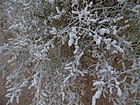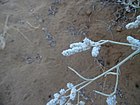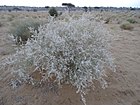Note: This is a project under development. The articles on this wiki are just being initiated and broadly incomplete. You can Help creating new pages.
Difference between revisions of "Aerva javanica - Snow bush"
(→Common names) |
(→Photo Gallery) |
||
| Line 47: | Line 47: | ||
==Photo Gallery== | ==Photo Gallery== | ||
<gallery class="left" caption="" widths="140px" heights="140px"> | <gallery class="left" caption="" widths="140px" heights="140px"> | ||
| − | + | Aerva javanica - Habitat shot.jpg | |
| − | + | ||
| + | |||
| + | Aerva javanica 01.jpg | ||
| + | |||
| + | |||
| + | Aerva javanica 02.jpg | ||
| + | |||
| + | |||
| + | Aerva javanica 03.jpg | ||
| + | A | ||
| + | |||
| + | Aerva javanica 04.jpg | ||
| + | |||
| + | |||
| + | Aerva javanica Pilbara.jpg | ||
| + | |||
| + | |||
| + | Aerva javanica-1-dk-yercaud-salem-India.JPG | ||
| + | |||
| + | |||
| + | Aerva javanica-2-dk-yercaud-salem-India.JPG | ||
| − | |||
</gallery> | </gallery> | ||
Revision as of 17:25, 16 April 2018
Buee (Hindi: बुई), or Aerva javanica, the kapok bush or desert cotton, is a species of plant in the Amaranthaceae family. It has a native distribution incorporating much of Africa (including Madagascar), and the south-west and south of Asia.
Contents
Uses
rheumatism, self cracking of skin, Hemorrhoids, skin dryness, Skin eruptions,
Parts Used
Chemical Composition
Anthelmintics, Betulin, composition, Glycosides, helminthoses, helminths, Human diseases, infections, Medicinal plants, medicinal properties, parasites, parasitoses, plant extracts, Sterols, Terpenoids, traditional medicine[1]
Common names
| Language | Common name |
|---|---|
| Kannada | |
| Hindi | buyi |
| Malayalam | |
| Tamil | Perumpoolai |
| Telugu | |
| Marathi | NA |
| Gujarathi | NA |
| Punjabi | NA |
| Kashmiri | NA |
| Sanskrit | Dholphuli, Khul |
| English | Javanese Wool Plant |
Habit
Identification
Leaf
| Kind | Shape | Feature |
|---|---|---|
| Simple | 2-7 cm long | leaves are alternately arranged along the stems and are quite variable in shape |
Flower
| Type | Size | Color and composition | Stamen | More information |
|---|---|---|---|---|
| bisexual | up to 10 cm long and 10 mm wide | whitish flowers | Separate male and female flowers are borne on separate plants |
Fruit
| Type | Size | Mass | Appearance | Seeds | More information |
|---|---|---|---|---|---|
| rounded | 1-1.5 mm long | However, they can sometimes have a very faint surface pattern | With hooked hairs | Each fruit contains a single dark brown to black coloured seed | {{{6}}} |
Other features
List of Ayurvedic medicine in which the herb is used
- Vishatinduka Taila as root juice extract
Where to get the saplings
Mode of Propagation
How to plant/cultivate
A plant of drier areas in the tropics and subtropics where it is found at elevations from sea level to 1,900 metres[3]
Commonly seen growing in areas
Africa, Asia-Temperate, Asia-Tropical.
Photo Gallery
- A
References
External Links
http://www.ceacsu.edu.pk/PDF%20file/Volume%2013%20No%2001/48-52-PJAEC-04102011-05-old.pdf https://www.researchgate.net/publication/267409203_Chemical_Compositions_of_the_Essential_oil_of_Aerva_javanica_Leaves_and_Stems https://www.feedipedia.org/node/193 https://plants.jstor.org/compilation/aerva.javanica
- Pages with broken file links
- Pages that are stubs
- Ayurvedic Herbs known to be helpful to treat rheumatism
- Ayurvedic Herbs known to be helpful to treat self cracking of skin
- Ayurvedic Herbs known to be helpful to treat Hemorrhoids
- Ayurvedic Herbs known to be helpful to treat skin dryness
- Ayurvedic Herbs known to be helpful to treat Skin eruptions
- Herbs with roots used in medicine
- Herbs with woolly spikes used in medicine
- Herbs with common name in Hindi
- Herbs with common name in Tamil
- Herbs with common name in Sanskrit
- Herbs with common name in English
- Habit - Perennial
- Index of Plants which can be propagated by Seeds
- Herbs that are commonly seen in the region of Africa
- Herbs that are commonly seen in the region of Asia-Temperate
- Herbs that are commonly seen in the region of Asia-Tropical
- Herbs








